Open Program 2022
Theme 2022 BEAUTY
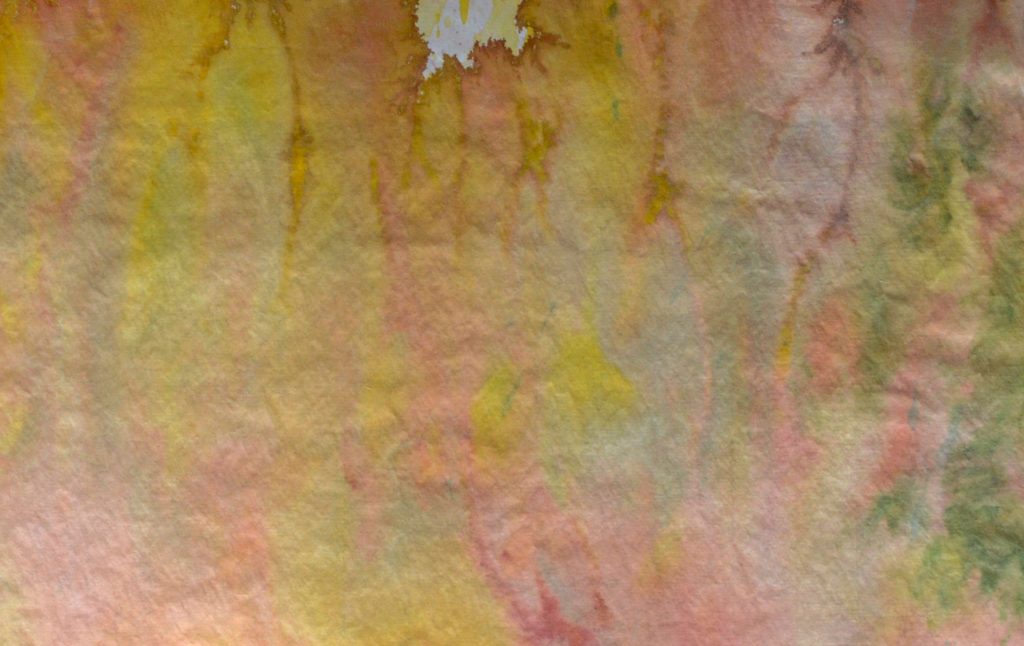
“When we project, we think about the question we are asked, but if the answer is not beautiful, we know we must keep searching.” RCR
The profound experience of beauty entails the strangeness provoked by a particular sensation of revelation, disturbance, and discovery in the face of that which fascinates and moves us. Beauty as an enigma and longing is present in RCR’s phrase, which presents every project as a search for beauty beyond formal and functional solutions, to endow them with soul and appeal to the sensual dimension of the body and the emotional dimension of the intellect, to be a place where the five senses vibrate and where body and soul are a single, undifferentiated one.
Plato considers beauty as an ideal that only takes place in the soul. The only way to access it is through philosophy. For Kant, beauty is not a property of a work of art or a natural phenomenon but the awareness of pleasure that accompanies the ‘free play of imagination and understanding. Although it seems they are using reason to decide what is beautiful, the judgement is not a cognitive judgement; consequently, it is not logical but aesthetic.
Not far from this line of thought is neuroaesthetics, which states that beauty is a prodigy of the brain since beauty does not exist in the world we see, hear or touch, nor does it reside in anything around us, but only in the minds of human beings. At the intersection of psychology, neuroscience, and the study of human evolution, it seeks the neurobiological foundations and evolutionary history of the cognitive and affective processes involved in aesthetic experiences and artistic and creative activities. This approach has revealed that aesthetic stimuli are processed in the medial orbitofrontal cortex, where various brain processes related to perception, memory, comprehension, attention, emotion, and pleasure are involved. One of the most exciting conclusions reached from this perspective is that the more specific the cognitive process, the more beautiful and pleasurable an object is.
Beauty is a subjective experience that can vary from one individual to another and between cultures and epochs. In Western art and architecture, it is attributed to qualities such as harmony, proportion, symmetry, and its ability to captivate the spirit and have their maximum expression in the golden ratio, which can be found in geometric figures, compositions, and nature. The golden ratio is the ratio of two-line segments to each other and is related to the Fibonacci series, which appears continuously in the structure of living things. Almost all natural spirals in nature are natural spiral ratios, as their number is usually a term of the Fibonacci sequence.
In Western culture, beauty is linked to the notion of the perfect, a term from the Latin ‘perfectus’, i.e., complete. Imperfection in architecture is closely related to time. Juhani Pallasmaa points out that ” we live in space and place, but we also inhabit time. Architecture is not only about taming space but also a profound defence against the terror of time. The language of beauty is essentially the language of timeless reality. Our longing and pursuit of beauty is an unconscious attempt to temporarily eliminate the reality of erosion, entropy, and death”.
In Taoism, perfection is considered equivalent to death, as it is a state where no further growth or development can occur. The acceptance of fleeting and imperfect beauty is condensed in the concept of Wabi-Sabi, which accepts transience, nature, and melancholy, making room for the poor and the incomplete. “Wabi” refers to “the elegant beauty of humble simplicity” and is combined with “Sabi”, meaning “the passage of time and subsequent deterioration”. An imperfect piece leaves something incomplete for the imagination to play with.
Appreciating something considered Wabi-Sabi achieves awareness of the natural forces involved in the creation of the work, acceptance of the power of nature and abandonment of dualism: the belief that we are separate from our environment.
Beauty is related to our development as a species and is essential for those who wish our society to be just, equal and concerned with truth. Truth, beauty, and goodness are a triad of concepts that make up the three essential human virtues and run through the entire history of human thought. Thus, beauty is good and faithful, just as good is true and beautiful, and the truth is good and beautiful. By interrelating the three concepts intimately, we find that they are inseparable entities, so an object will not be one without the other. Hence Plato defines beauty as the splendour of truth.
When Jean-Jacques Rousseau states that “I have always believed that good is only beauty put into action“, we are in tune with a creative and interdisciplinary initiative between art, culture, social inclusion, science, and technology, such as the New European Bauhaus when it convenes a meeting space to design more beautiful, sustainable, and inclusive ways of living together. Beautiful for our minds and our souls.
Beautiful means inclusive and accessible spaces where dialogue between diverse cultures, disciplines, genders, and ages becomes an opportunity to imagine a better place for all. It also means a more inclusive economy, with distributed wealth and affordable spaces.
Beautiful means sustainable solutions that create a dialogue between our built environment and the planet’s ecosystems. It means realising regenerative approaches inspired by natural cycles that replenish resources and protect biodiversity.
Beautiful means enriching experiences that respond to needs beyond our material dimension, inspired by creativity, art, and culture. It means appreciating diversity as an opportunity to learn from others.
They are definitions of beauty that proclaim its transformative value, which is in tune with the quest manifested in RCR’s phrase: if the answer is not beautiful, we know we have to keep searching.
Lecture Series RCR TALKS
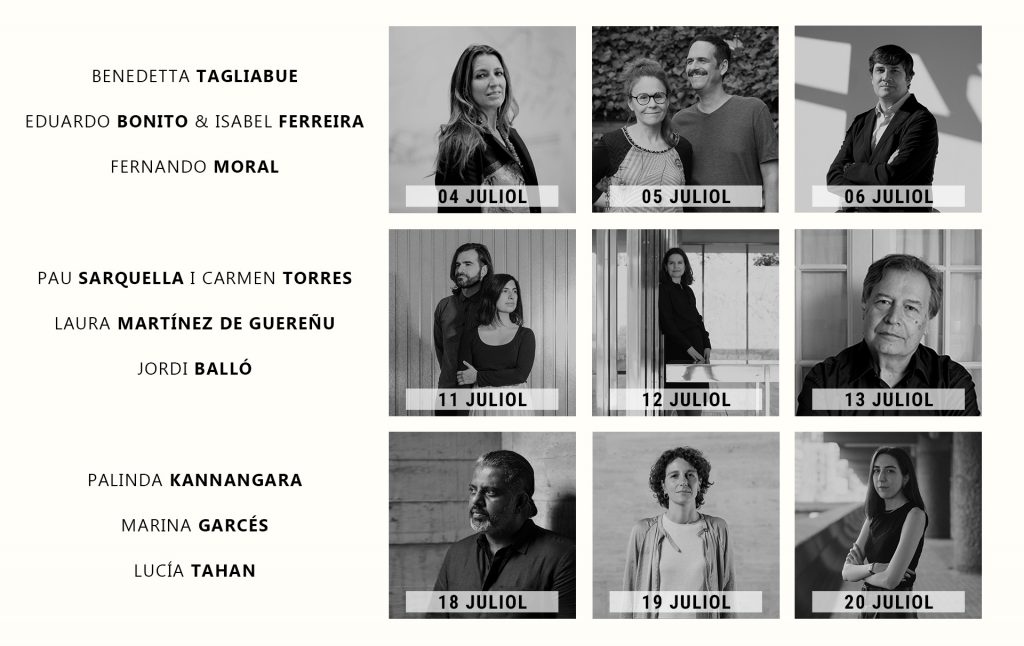
The series of 9 lectures, all preceded by video art creations from the Forest Matter IV series, is structured in three thematic blocks:
- Architecture Mondays as a meeting to reflect on space and place at all scales, with the participation of architects Benedetta Tagliabue, Pau Sarquella and Carmen Torres, and Palinda Kannangara.
- RCR La Vila Tuesdays, with a pilot experience for the presentation of the fourth edition of the Open Program by Eduardo Bonito and Isabel Ferreira with an audience limited to RCR La Vila in the Vall de Bianya; followed by two Chamber Sessions in a documentary format, by Laura Martínez de Guereñu and Marina Garcés, in which we moved to the living room of the farmhouse at RCR La Vila, and
- Art Wednesdays, to explore the beauty of spaces in art, film and virtual reality with Fernando Moral, Jordi Balló and Lucia Tahan.
FOREST MATTER IV
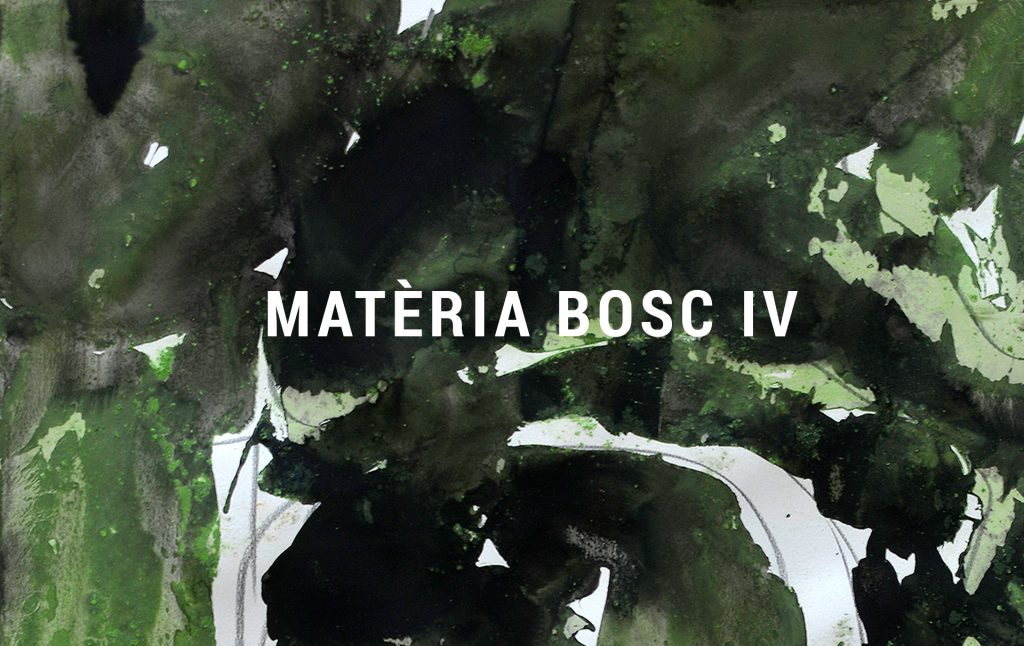
Forest Matter is a selection of videocreations that celebrate the poetic power of trees and open the conferences that make up the Open Program.
It is a project by LABEA – Laboratorio de Artes Vivas y Ecología in collaboration with RCR BUNKA Fundación and curated by Isabel Ferreira and Eduardo Bonito.
Videocreations Series FOREST MATTER IV

In its 4th edition, Forest Matter presents eight short video dance and video artworks that, as in previous editions, accompany the lectures of the Open Program 2022, plus a selection of pieces from 2019 to date by Eduardo Bonito and Isabel Ferreira.
In this edition, four of the eight works presented have been specially produced and/or adapted for the programme. They are the works Tala by Artistas Inflamables, Subcortical by Martin Etxauri, The Forest by Gilles Jobin Company, and Mistura by Nina Guzzo, the latter two adapted from existing material.
Exhibition HISAO SUZUKI FUND
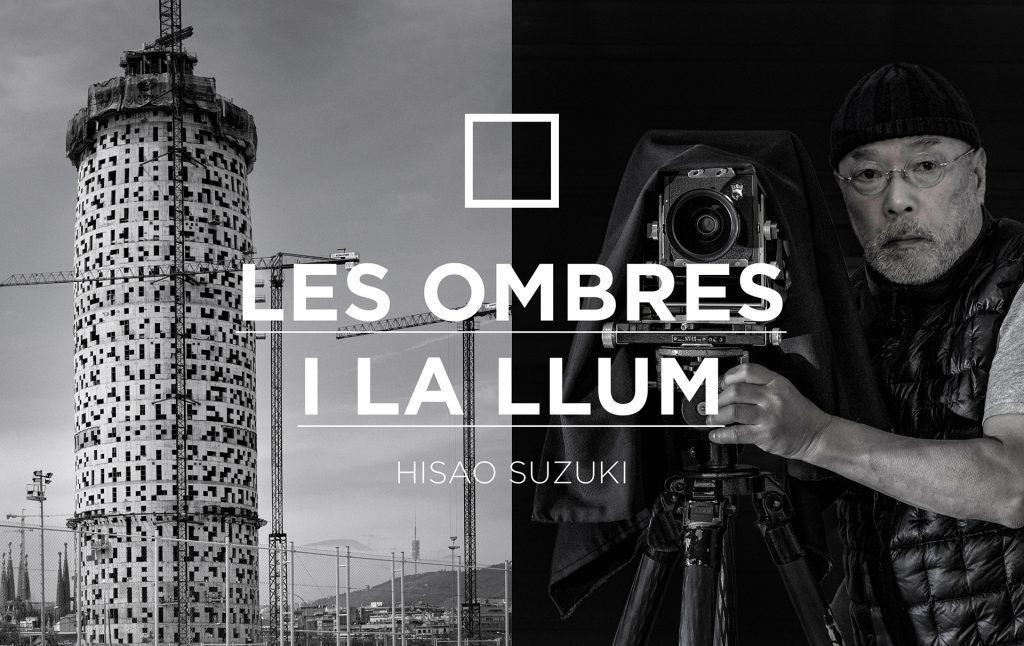
HISAO SUZUKI FUND · Shadows and Light · Hisao Suzuki
A collection of international architectural photographs representative of Hisao Suzuki’s work since the 1980s.
This exhibition presents Hisao Suzuki’s donation of his entire collection to the RCR Bunka Fundació. The collection contains 46,000 photographs of contemporary architecture worldwide and portraits of architects and musical composers. The group also includes photographic films and the original digital archives of the images. It is considered the most important photographic archive of contemporary architecture from the last 30 years.
Suzuki’s link with Catalonia began in 1978 after seeing an exhibition of photographs of Antoni Gaudí in Yokohama, Japan, which captivated him. Four years later, he arrived for the first time in Barcelona, where he stayed to live. In this pre-Olympic Barcelona, Hisao Suzuki began his career as an architectural photographer. He is the author of the documentation of the construction process of the Palau Sant Jordi, as well as many works on Catalan modernism, among others. His career has recently earned him the Creu de Sant Jordi 2022 (Saint George’s Cross) award from the Generalitat de Catalunya.
From June 3 to August 15, 2022
Museu de la Garrotxa. Sala Oberta 2. Carrer de l’Hospici, 8. 17800 Olot (Girona)
Opening hours. Weekdays from 10 am to 1 pm and from 5 pm to 8 pm. Saturdays and holidays from 11 am to 2 pm and from 5 pm to 8 pm. Mondays closed. Free admission
Supported by
Monday, 4 July 2022 · Forest Matter IV · Pati de l'Hospici · Olot · 19h
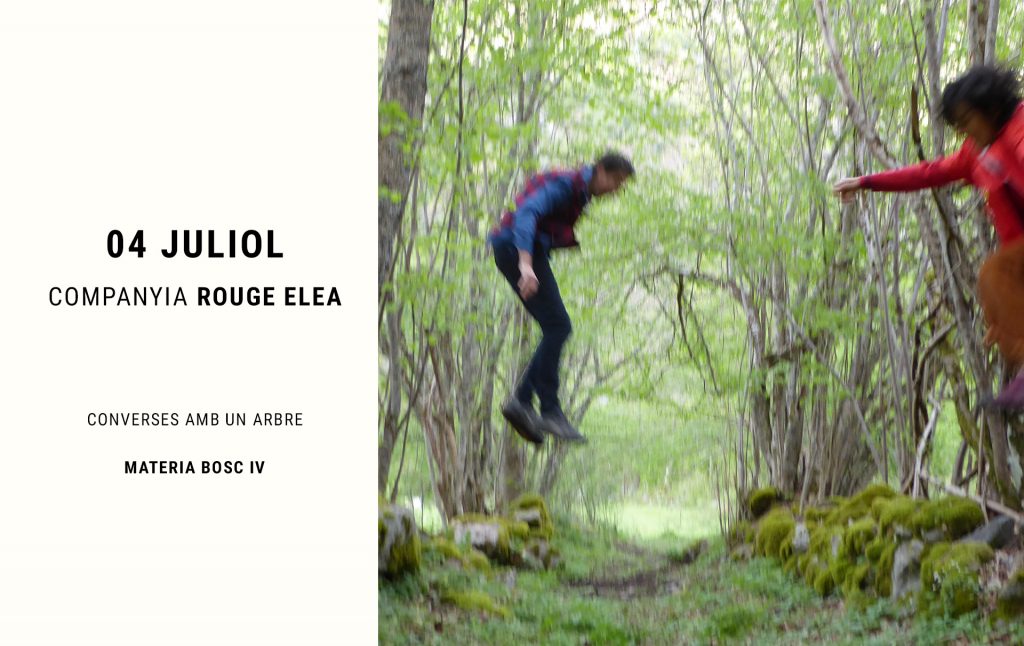
FOREST MATTER IV · Conversations with a tree (2019) · Company Rouge Elea, Spain-France · 02:30 min
“Conversations with a tree” puts images and poetry to the eponymous work created by the Basque-French company in 2019.
“Everyone is likely thrown under the tree at the end of this journey while asking themselves, ‘Am I a nature? Is there a deer sleeping inside me? It’s funny … I almost feel like I’m growing up.’ tree?”
Des de fa 15 anys, Corine Cella es penja dels arbres per ballar. Ander Fernández fa 15 anys que rasca la fusta de la seva guitarra i el paper de la seva ploma. Junts, entaulen una conversa poètica amb els arbres.
For 15 years, Corine Cella has been hanging from the trees to dance. Ander Fernández has been scratching the wood of his guitar and pen paper for 15 years. Together, they strike up a poetic conversation with the trees.
Creation: Rouge Elea, Corine Cella and Ander Fernández. Video: Zazpi t’erdi.
Monday, 4 July 2022 · Lecture · Pati de l'Hospici · Olot · 19h
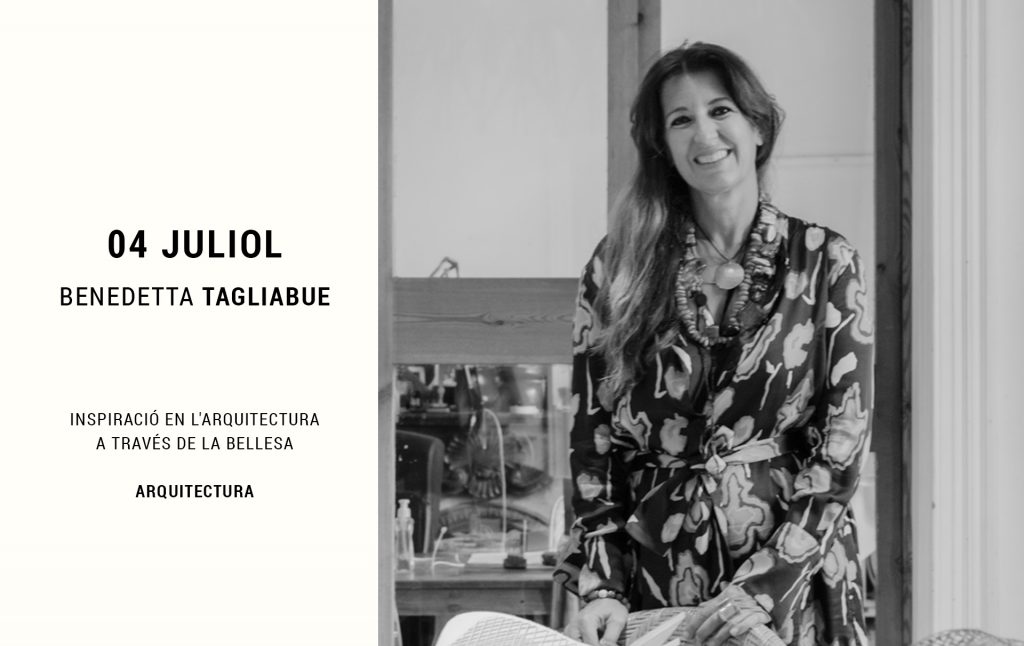
ARCHITECTURE MONDAYS – Inspiration in Architecture through Beauty – Benedetta Tagliabue – EMBT Architects
In our architecture, we seek to reflect the complexity of reality, its colours, its materiality, and its smells,… harmonised in a specific situation, in a place, in an era… Is this harmonisation a beauty search? We will present our studio examples of projects in different phases to investigate the subject and, incidentally, to open a conversation.
Benedetta Tagliabue – EMBT Arquitectes is an internationally recognised architecture studio founded in 1994 by Enric Miralles (1955-2000) and Benedetta Tagliabue (Milan, Italy, 1963) in Barcelona, which today operates worldwide. However, the firm has maintained its fundamental core: an open approach full of exploration and experimentation, anda high level of conceptual thinking. Its poetic architecture, always attentive to context, reflects the philosophy of changing the environment by observing and respecting the site, history and culture.
Tuesday, 5 July 2022 · Forest Matter IV · Online premiere · 19h
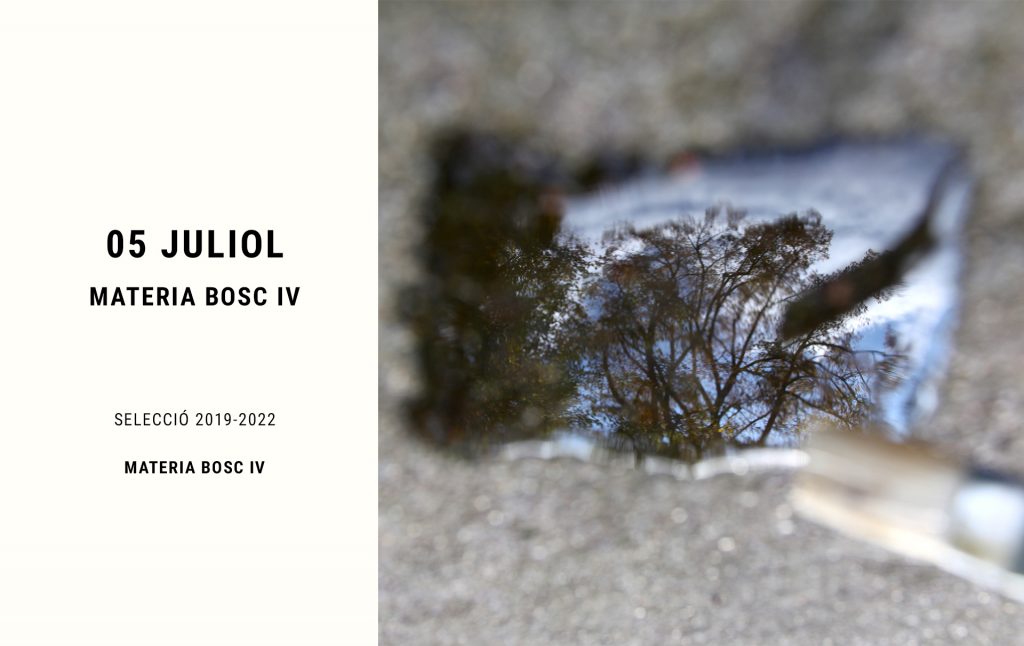
FOREST MATTER IV · Forest Matter 2019 – 2022 · 24:01 min
- FOREST MATTER IV · 365 Trees (2013) · Cecylia Malik, Poland · 4:30 min · Premiere at the 2022 Open Program: Monday, July 11, 2022
- MATÈRIA BOSC II · Ma mère l’oye – extract (2001) · Thierry de Mey, Belgium / France · 5:35 min · Premiered in the Open 2020 Program: Thursday, July 23, 2020
- FOREST MATTER I · Motus Gravis (2013) · Michele Ragni, Italy · 1:00 min · Premiered in the Open Program 2019: Tuesday, July 23, 2019
- FOREST MATTER III · Good Things to Come (2021) · Krystal S. Lowe & Alexander Wharton, United Kingdom · 02:00 min · Released in Open Program 2021: Monday, July 19, 2021
- FOREST MATTER I · Zenit (2018) · Derek Pedrós, Spain · 03:00 min · Released in the Open Program 2019: Monday, July 29, 2019
- FOREST MATTER II · Water on Asphalt (2014) · Johanna Reich, Germany · 1:25 min · Released in the Open 2020 Program: Monday, July 20, 2020
- FOREST MATTER IV · Felling (2022) · Luciana Croatto & Artistas Inflamables, Spain · 03:00 min · Premieres in the Open Program 2022: Monday, July 18, 2022
Tuesday, 5 July 2022 · Lecture · RCR La Vila · 21h
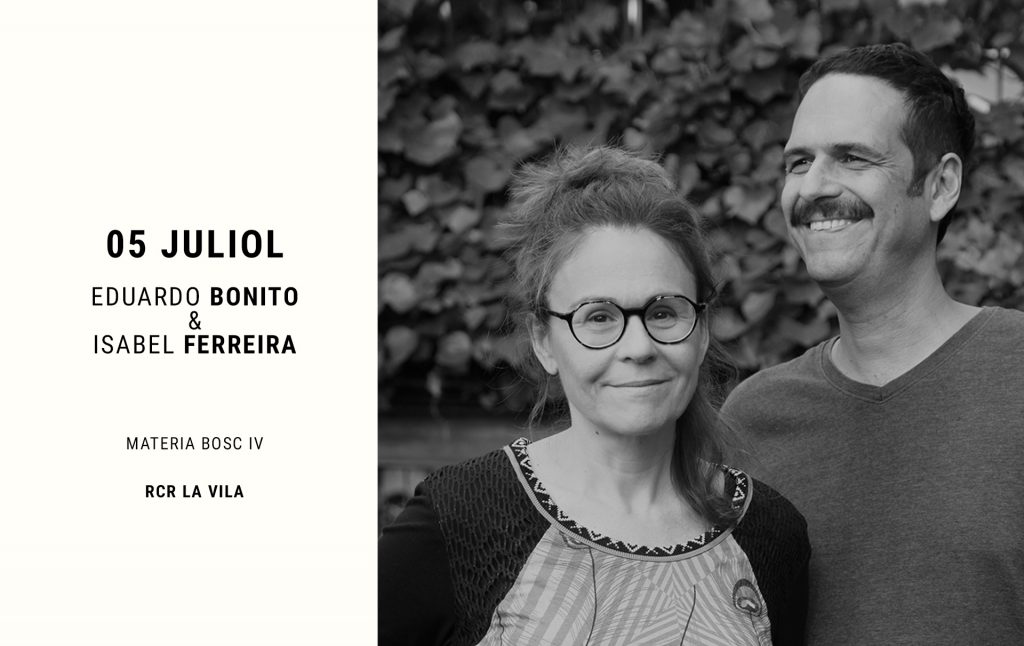
RCR LA VILA TUESDAYS · Forest Matter IV · Eduardo Bonito & Isabel Ferreira
Contemporary forest culture in contemporary art and performing arts projects.
Isabel Ferreira (Pamplona, Spain, 1970) is a curator and cultural manager with a degree in Art History, a Master’s in Visual Culture and a University Specialist in Culture and Territory. She was, among others, director of the DNA festivals of the Government of Navarre and ComPosiciones Políticas de Rio de Janeiro.
Eduardo Bonito (São Paulo, Brazil, 1969) coordinates the European project BPDA which brings together 12 festivals from 12 countries, and has been, among others, director of Panorama, one of the most relevant festivals in the Americas, director of Dança em Foco and BAC – Bienal de las Artes del Cuerpo, Imagen y Movimiento de Madrid. He participates in the governance group of the European project RESHAPE.
Wednesday, 6 July 2022 · Forest Matter IV · Pati de l'Hospici · Olot · 19h
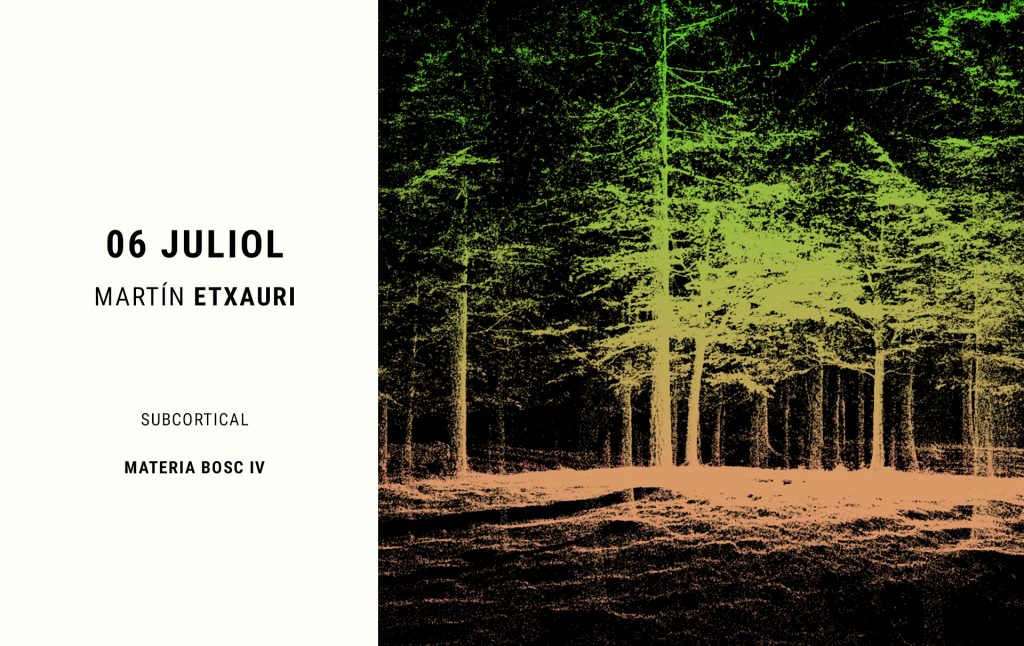
FOREST MATTER IV · Subcortical (2022) · Martín Etxauri, Spain · 02:30
Subcortical refers to the botanical term that looks under the bark of trees, but also the doctor who looks under the bark of the brain, this structure where emotions, instincts or dreams are regulated. The film takes us to a place beneath the surface, on a journey that reveals the fractality of plant life.
Martin Etxauri Sainz de Murieta, alias Txo!?, is an artist and researcher in new media. He holds a degree in Fine Arts and a PhD in Contemporary Art from the EHU and is in continuous self-taught training. It tries to think of the technological with a critical and oblique gaze and investigates the relationship between the digital and the physical, through processes of digitization and transformation of nature.
Image and sound: Martin Etxauri Sainz de Murieta, Txo!?. LiDAR scanning: Unai Requejo & Martin Etxauri. LiDAR scanner courtesy of the Faculty of Fine Arts, UPV / EH. Photogrammetry: Martin Etxauri. Format: FullHD 1080p, 16: 9, Color, Stereo. Technique: CGI, LiDAR, Photogrammetry.
Wednesday, 6 July 2022 · Lecture · Pati de l'Hospici · Olot · 19h
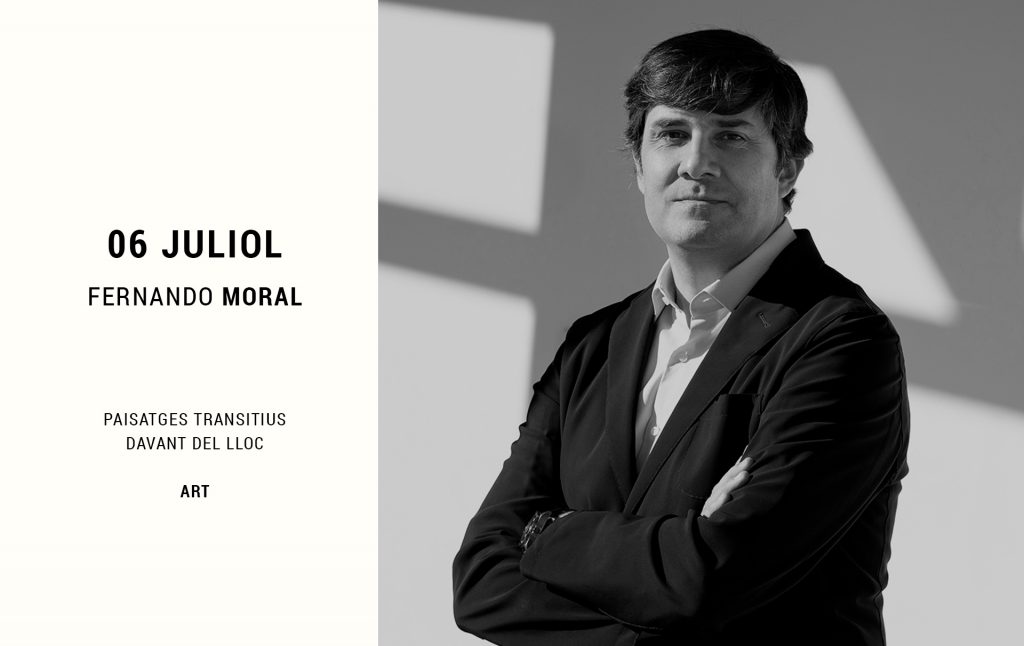
ART WEDNESDAYS· Transitive Landscapes: Lygia Clark, Jorge Oteiza and Franz Weissmann in front of the site · Fernando Moral
A reading of the work of these three figures reveals links between Europe and America on the periphery of the great movements and, fundamentally, a singular conception of art, architecture, and man. They approached the shaping of new territories from complex intangible values.
Fernando Moral is an architect from the University of Valladolid, a Master “Architecture: criticism and project” from the Barcelona School of Architecture of Barcelona and PhD from the Polytechnic University of Catalonia. He obtained the International Research Fellowship “Jorge Oteiza” from the Public University of Navarra. He is Director of the School of Architecture of the Nebrija University (Spain), a member of the Consolidated Research Group “Art and City” of the Universidad Complutense of Madrid, as well as Visiting Professor of Sapienza – Università di Roma (Italy). His papers have been published in renowned journals such as Università degli studi di Napoli Federico II, Arquitectura Viva, EGA, Abada and Springer publishing house, among other references. He is the author of Oteiza: Arquitectura desocupada and Alfredo Pirri. Espacio privado, arte público. His work as a curator is reflected in exhibitions such as ‘Mecanoo architecten: the Dutch mountains’, ‘Abalos + Sentkiewicz: 6 verticalscapes’ and ‘Eduardo Souto de Moura: Projects and Competitions’. He has collaborated with the Museo Nacional Centro de Arte Reina Sofía.
Thursday, 7 July 2022 · Lecture · Pati de l'Hospici · Olot · 19h
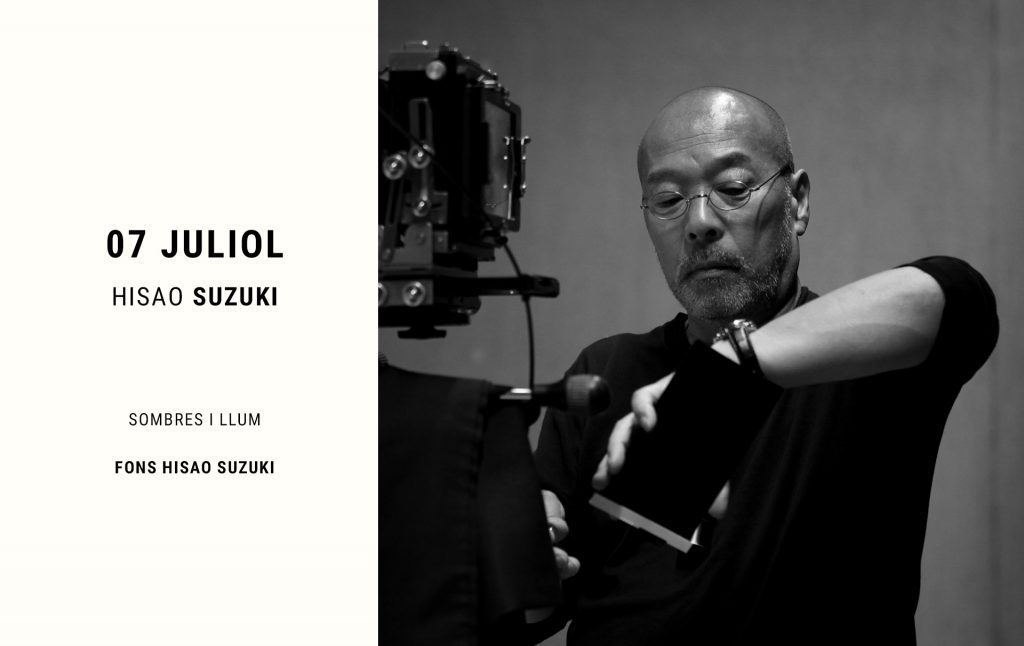
HISAO SUZUKI FUND · Shadows and Light · Hisao Suzuki
Hisao Suzuki reveals the reality of serene beauty. Despite his desire to document and enormous rigour in the search for perfection, his images are of great poetic sensitivity, the fruit of the search for a light in which the contrasts between light and shadow dissolve. It is the magic light, the soft light that appears in the morning and evening, in which, as the balance of the sky’s luminosity is broken, it becomes more profound and more transparent.
Hisao Suzuki (Yamagata, Japan, 1957) graduated from the Tokyo School of Photography in 1979. Fascinated by the architecture of Antoni Gaudí, he arrived in Barcelona in 1982 and settled there. In 1986 he began to collaborate with the magazine El Croquis. He became its main photographer, thus contributing to the publication’s recognition as the most prestigious international medium for disseminating contemporary architecture. His photographs appear in numerous books and other global architecture and design magazines. His career has recently earned him the Creu de Sant Jordi 2022 award from the Generalitat de Catalunya.
Monday, 11 July 2022 · Forest Matter · Pati de l'Hospici · Olot · 19h
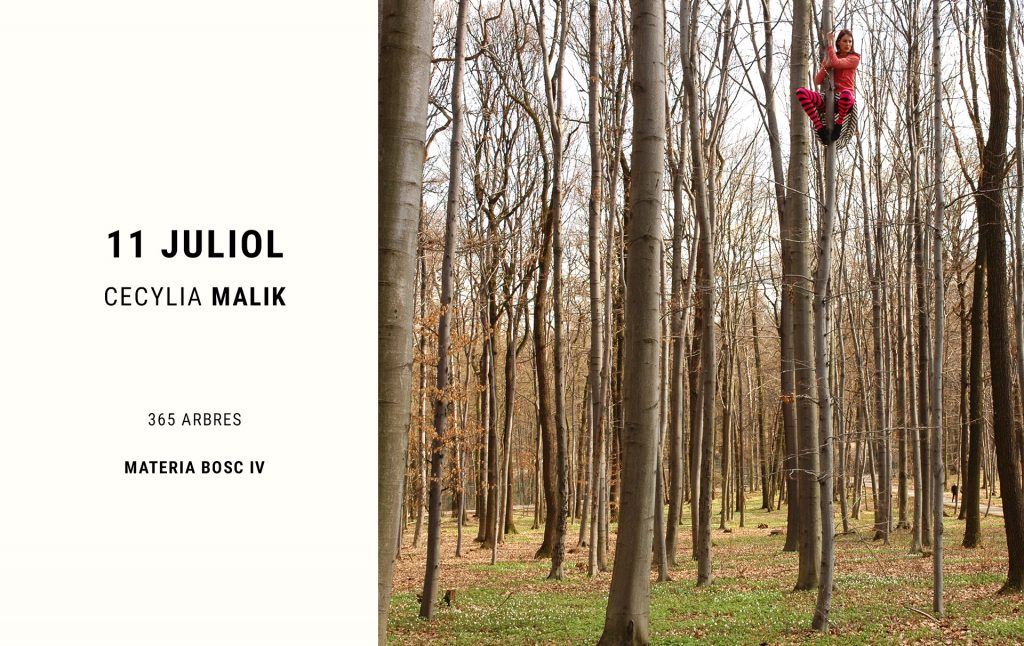
FOREST MATTER IV · 365 trees (2009-) · Cecylia Malik, Poland · 04:30
“Since September 25, 2009, I climbed a different tree for a year. Every day I looked for the right tree, background and context. Then, I selected clothes looking to accentuate the contrast. While climbing the trees, I experienced reality with all my senses became something very unreal.”
Cecylia Malik was born in Krakow and is a painter, performer, educator, environmentalist and urban activist with a postgraduate degree in curatorial studies. She is, among others, co-creator of the Alcon Blue Collective campaign and initiator of social and artistic actions such as Polish mothers on the stump”.
Creation: Cecylia Malik
Monday, 11 July 2022 · Lecture · Pati de l'Hospici · Olot · 19h
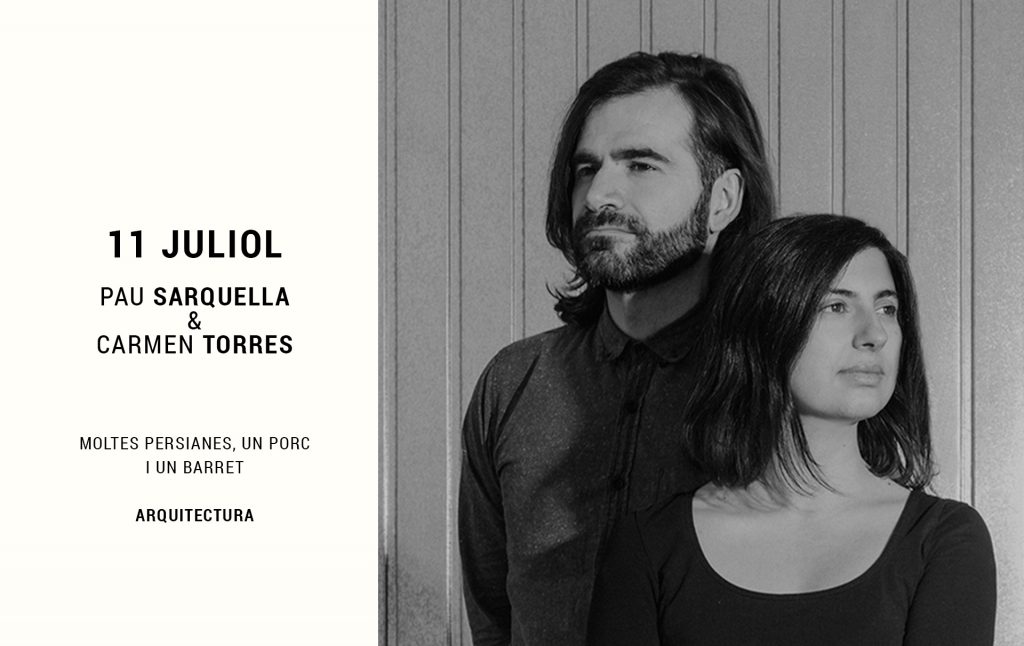
ARCHITECTURE MONDAYS · Many blinds, a pig and a hat · Pau Sarquella & Carmen Torres
From ephemeral, soft, and manipulable architectures to the conversion of archetypes of the collective imagination into contemporary reinterpretations, Carmen Torres and Pau Sarquella compile a series of strategies and systems that they use as project generators.
Sarquella Torres is an architecture studio founded by Pau Sarquella (Banyoles, Spain, 1986) and Carmen Torres (Barcelona, Spain, 1986), both graduates of the School of Architecture of Barcelona (ETSAB 2011).
After four years in Southeast Asia, involved in teaching in the International Program in Design and Architecture (INDA) of the Chulalongkorn University of Bangkok, they settled in Banyoles (Girona). They currently complement the teaching activity at the ETSAV (UPC), the University of Girona and La Salle (Universitat Ramon Llull) with the development of projects that explore the organic capacity of the limits between different design disciplines, generating thought through the practice.
They understand their supposedly peripheral location as an opportunity to tackle each project tangentially. Fleeing from a priori and conventions, they have generated a diverse range of projects, which maintains a certain coherence in their narrative will and conversion of archetypes of the collective imaginary into contemporary reinterpretations.
Some of its most outstanding projects are Bang Nong Saeng Kindergarten, FAD International Opinion Prize and a special mention from the jury; Germans Soler butcher shop, Bauwelt award; o Sostres i Platforms, AJAC award.
Pau is co-author of the Barcelona Blind, a redesign of the traditional rope blind that has become a recurring product in the projects of many national architects. The product has been awarded first prize at the Arquia Próxima Forum 2016 and a Silver Delta from the ADI FAD.
Tuesday, 12 July 2022 · Forest Matter · Pati de l'Hospici · Olot · 19h
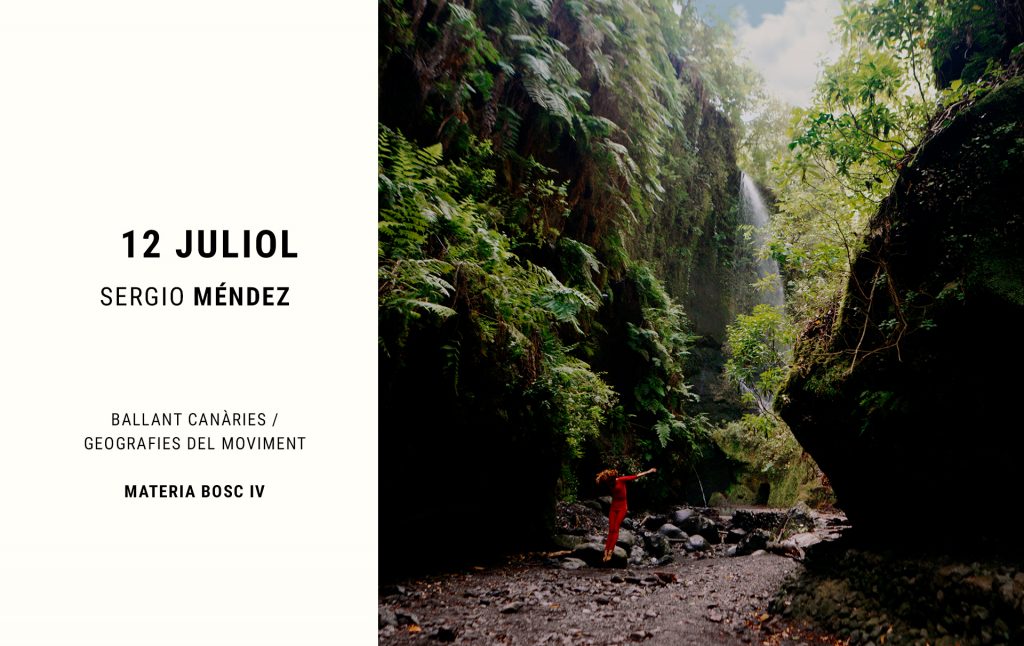
FOREST MATTER IV · Dancing Canary Islands / Geographies of Movement (2022) · Sergo Méndez, Spain · 02:00 min
Dancing Canary Islands is a project to make Dance visible in the Canary Islands and takes part in the Geographies of Movement program, directed by Dácil González. It consists of videos of dancers and creators of the islands, recorded in different locations in the archipelago, to combine the geographical and cultural richness of the Islands. The video creator is Sergo Méndez, and they have been made with the support of FIBICC.
Sergo Méndez is a videographer and video creator from Santa Cruz de Tenerife, Canary Islands, specializing in Performing Arts.
Teresa Lorenzo, a creator and dancer from La Palma, has an extensive professional career. She has collaborated with visual artists, composers, musicians, and varioucompanies withed mawdifferentre.
Daniel Abreu is a dancer and choreographer from Tenerife with a long creative career with more than 60 works in which he highlights the continuous search for physical languages and the transformation of the scene from a poetic point of view. 2014 he received the 2014 National Dance Award in the creative category.
Video Teresa Lorenzo – La Palma: Creation and interpretation: Teresa Lorenzo. Video recording and editing: Sergo Méndez. Location: Bosque de los Tilos. San Andrés and Sauce, La Palma.
Video Daniel Abreu – Gran Canaria: Creation and interpretation: Daniel Abreu. Video recording and editing: Sergo Méndez. Music: Francisco Sokolowicz. Location: MAIPÉS Archaeological Park. Agaete, Gran Canaria.
Tuesday, 12 July 2022 · Documentary Premiere · Pati de l'Hospici · Olot · 19h
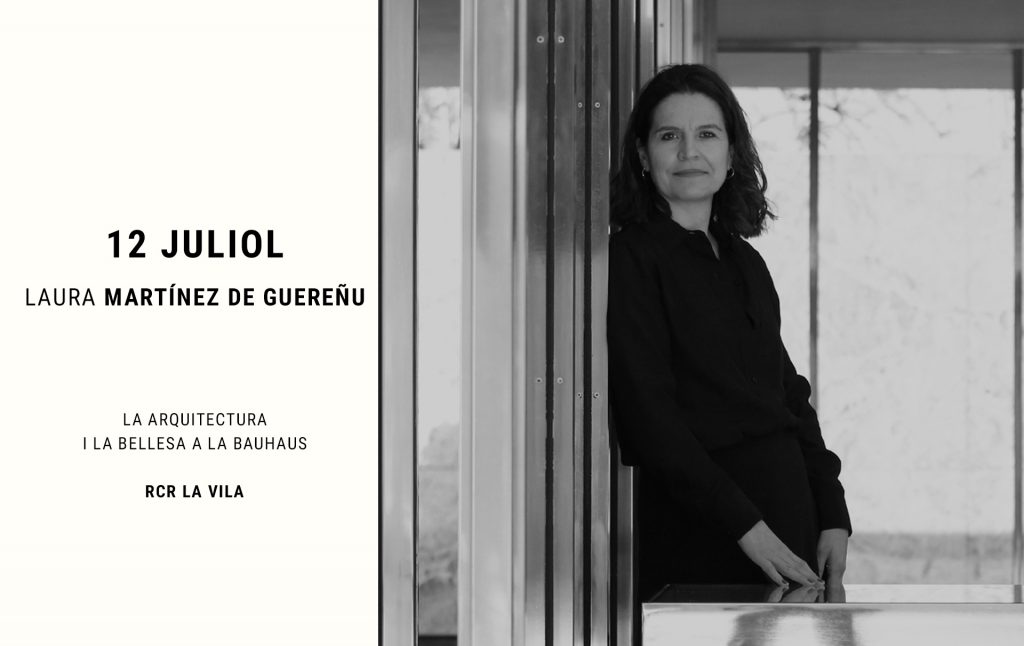
RCR LA VILA TUESDAYS · The Bauhaus’ Quest for Beauty and Architecture · Laura Martínez de Guereñu
Chamber Session · Farmhouse at RCR La Vila in la Vall de Bianya · Recorded February 8, 2022
The Bauhaus was a melting pot of new ideas, an incubator of what is now known as modernity. But what role did architecture and the search for beauty play in its pedagogical project?
Laura Martínez de Guereñu (Guipuzkoa, Spain, 1973) is a History and Theory of Architecture professor at IE University in Madrid and Alexander von Humboldt Research Fellow at the Architekturmuseum of the TU Munich. She is the author of the artistic intervention Re-enactment: Lilly Reich’s Work Occupies the Barcelona Pavilion and numerous writings on the Bauhaus, silenced authorship and forgotten histories in modern architecture. Her scholarly work has been recognised with many research grants, such as the Lilly Reich Grant for Equality in Architecture (Fundació Mies van der Rohe), Leonardo Grant for Researchers and Cultural Creators (BBVA Foundation), Writer in Residence (Josef and Anni Albers Foundation) and Excellence Grant (Rafael del Pino Foundation).
Wednesday, 13 July 2022 · Forest Matter · Pati de l'Hospici · Olot · 19h
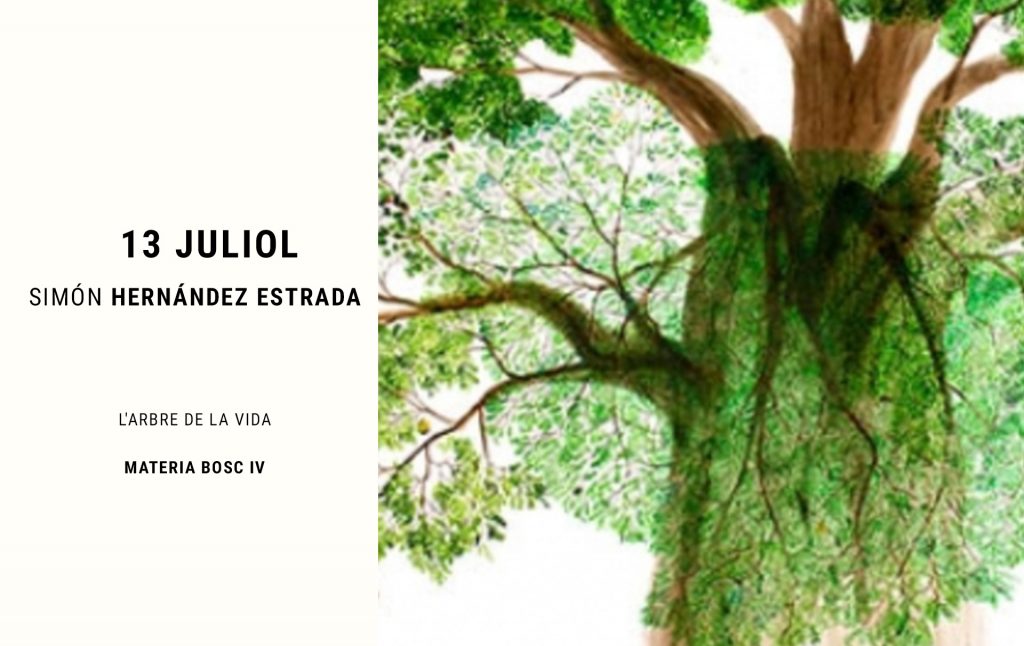
FOREST MATTER IV · The Tree of Life (2021) · Simón Hernández Estrada, Colombia · 10:35 min
Tribute to the painter Abel Rodríguez (nonuya name: Mogatge Guihu), an elder of the nonuya, an indigenous community in the middle of the Cahuinarí River in Colombia. Through drawings and narratives, Abel transmits to future generations the knowledge of his ancestors about the plants of the Amazon basin, their coexistence with animals and their mythological meanings.
Simón Hernández Estrada is a director, producer and editor with a long career in the field of documentary having worked for media such as the BBC, ART, CNN, TVE, TVC, Red Bull Media House, Caracol TV and Señal Colombia.
Director: Simón Hernández Estrada. Production: Instituto de Visión / la Popular. Producers: Maria Paula Bastidas and Beatriz López. Music: Simón Mejía.
Wednesday, 13 July 2022 · Lecture · Pati de l'Hospici · Olot · 19h
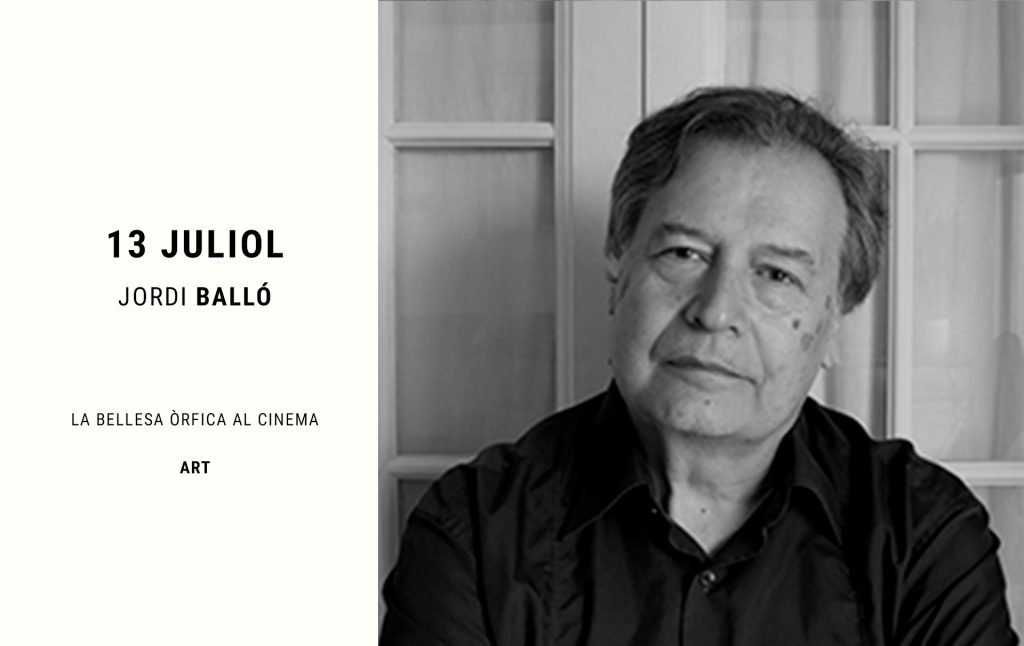
ART WEDNESDAYS · Orphic Beauty in Cinema · Jordi Balló
Beauty in cinema from the experience of Hammershoi and Dreyer and its extension, from those images that are always about to appear and disappear, thus showing the artist’s crisis as a source of creative inspiration in the cinema of Hitchcock, Fellini, Lynch or Céline Sciamma.
Jordi Balló (Figueres, Spain, 1954) is Professor of Film Iconography at Pompeu Fabra University in Barcelona. He was elected Dean of the Faculty of Communication (2018-2021) and subsequently Director of the Department of Communication (2021). He has also been Visiting Professor in the Department of Iberian and Latin American Cultures at Stanford University (California) in 2008.
He is the author and co-author of the books La llavor immortal. Els arguments universals en el cinema (1995); Imatges del silenci (2000); Jo ja he estat aquí: ficcions de la repetició (2005, winner of the Serra d’Or Award); El món un escenari. Shakespeare: el guionista invisible (2015) and Motivos visuales del cine (2016). In addition, he was the conceptual author of the Cultura/s supplement of La Vanguardia. He was head of its Advisory Board between 2002 and 2014.
He was director of exhibitions at the Centro de Cultura Contemporánea de Barcelona from 1998 to 2011, where he curated exhibitions such as El siglo del cine; Mundo TV; La ciudad de los cineastas; Erice/Kiarostami; Hammershoi and Dreyer; Todas las cartas: Correspondencias fílmicas; and Pasolini Roma, where he explored the limits between the cinema and the museum space.
He directs the Master in Creative Documentary at Pompeu Fabra University, where he has promoted films such as La plaga and Sis dies corrents, by Neus Ballús; El cielo gira by Mercedes Álvarez; Cravan vs Cravan and La leyenda del tiempo by Isaki Lacuesta; Aguaviva by Ariadna Pujol; En Construcción by José Luis Guerin, or Mones com la Becky and De nens, by Joaquim Jordà, among others.
In 2011, he received the City of Barcelona Audiovisual Award as curator of the exhibition Todas las cartas. Correspondencias fílmicas. In 2005, he was awarded the Generalitat de Catalunya’s National Culture Prize for his direction of the master’s degree in Creative Documentary and his promotion of creative freedom.
Monday, 18 July 2022 · Forest Matter · Pati de l'Hospici · Olot · 19h
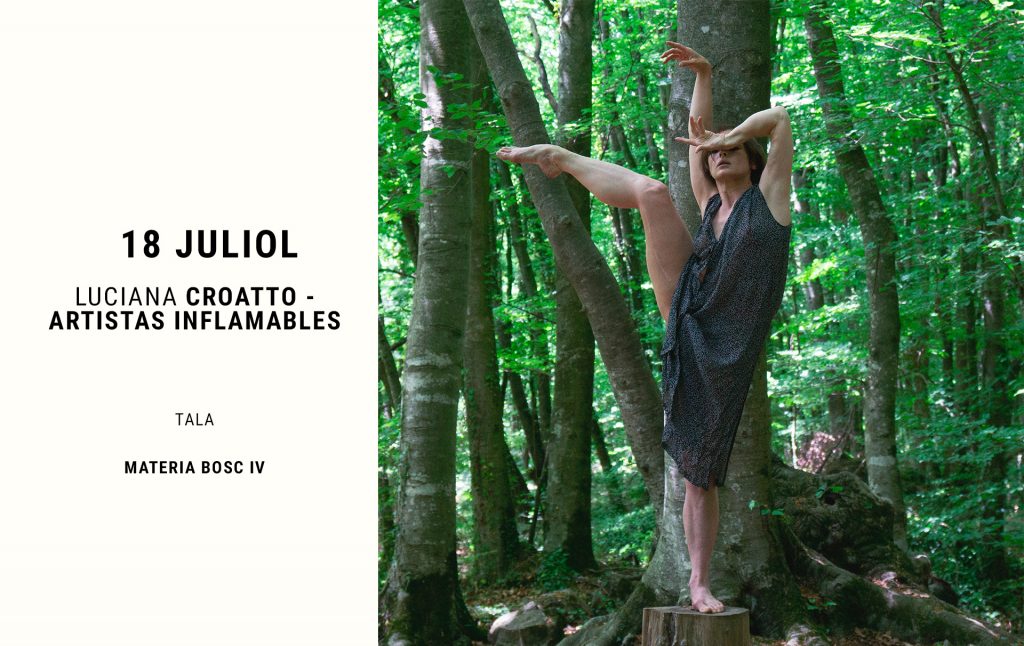
FOREST MATTER IV · Felling (2022) · Luciana Croatto – Artistas Inflamables Collective, Spain · 03:00 min
A plant is alive as long as its roots are, and it is not uncommon for felled trees to sprout new shoots and come back to life.
Luciana Croatto (Santa Fe, Argentina, 1985) graduated in 2019 with a Master in Performing Arts and Visual Culture at the Museo Reina Sofía and the University of Castilla-La Mancha. In addition, she was trained at the Instituto Superior de Danza of the Teatro Colón in Buenos Aires, Argentina, at the Instituto Superior de Dansa in Bordeaux, France and the Rudra-Béjart School, Lausanne, Switzerland, with Maurice Béjart, M. Haydee, as the most recognized teachers. Many others include A. Plisetsky, M. Gascard, L. Ekson, S. Bayard, M. Woodworth, and D. Chase. In addition, she is part of the Artistas inflamables Collective, an experimental physical dance and theatre company.
Choreography and performance: Luciana Croatto (Artistas Inflamables Collective). Camera and photography: Samuel Retortillo. Music: Jorge Garrido. Editing and credits: Alex Pachón. Audio recording: Diego M. Contienente. Production: Labea & Matinada. With the support of the La Rioja Choreographic Center & CIRVE Project.
Monday, 18 July 2022 · Lecture · Pati de l'Hospici · Olot · 19h
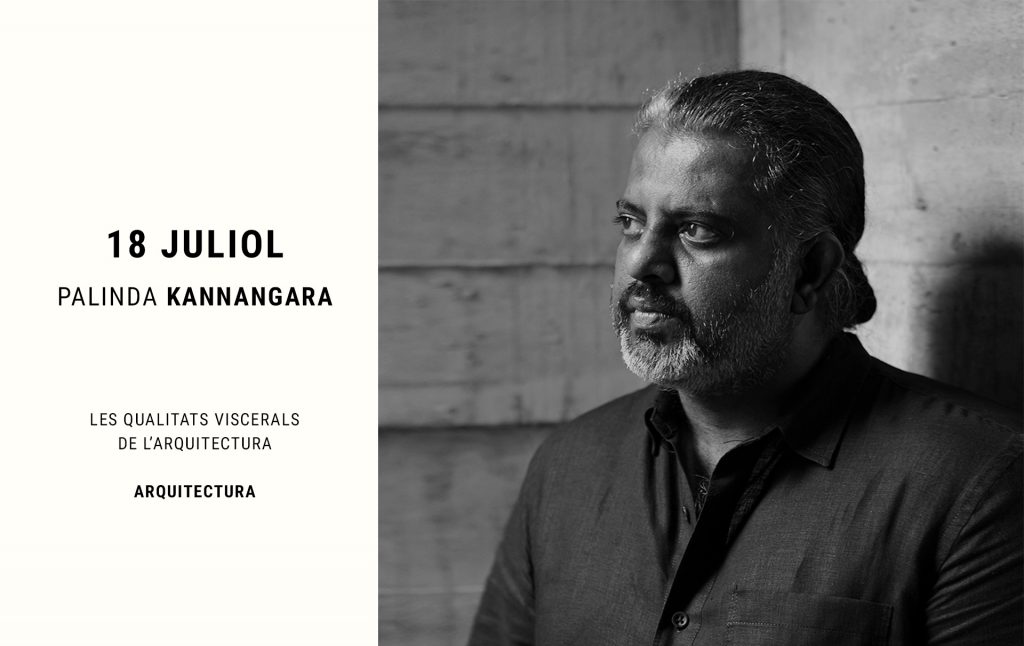
ARCHITECTURE MONDAYS · The Beauty of Doing Less · Palinda Kannangara
Sri Lanka or Ceylon, known for many centuries, has a vast history spreading over 2500 years. Primarily being a Buddhist nation, it has developed culturally and architecturally rooted in the practices of Theravada Buddhism. The way of living has been influenced by the Buddhist practice of “shunyata”, – which translates to “voidness” or “silence”, and its approach to design, encouraging a reductive philosophy.
Palinda Kannangara (Kolonnawa, Sri Lanka, 1970) has a mathematics and architecture background. As a student, Palinda trained with Sri Lankan modernist architect Anura Rantavibhushana, who had worked with renowned Sri Lankan architect Geoffrey Bawa for 16 years. Palinda established an independent practice in 2005.
Palinda Kannangara (Kolonnawa, Sri Lanka, 1970) has a mathematics and architecture background. As a student, Palinda trained with Sri Lankan modernist architect Anura Rantavibhushana, who had worked with renowned Sri Lankan architect Geoffrey Bawa for 16 years. Palinda established an independent practice in 2005.
Palinda Kannangara Architects is known for experiential architecture that hinges on simplicity and connection with the natural environment. The firm’s work has been recognised for its contextual sensitivity, handcrafted use of materials and minimalism reflective of the Sri Lankan ethos. Their portfolio spans the breadth of Sri Lanka, from the dry zone to the wetlands, to the coast, on a diverse palette of projects, often small in scale. The firm has received several prestigious national and international awards in its 16 years of practice. The studio’s Rajagiriya headquarters was awarded the RIBA International Awards for Excellence in Architecture 2018. More recently, they have won the RIBA International Award for Excellence for their project Artist Retreat at Pittugala and the 5th Triennial Geoffrey Bawa Award for Excellence in Architecture for their project Frame Holiday Structure at Imaduwa 2021. In addition, the firm’s work has featured El Croquis’ recent monograph 212.
Tuesday, 19 July 2022 · Forest Matter · Pati de l'Hospici · Olot · 19h
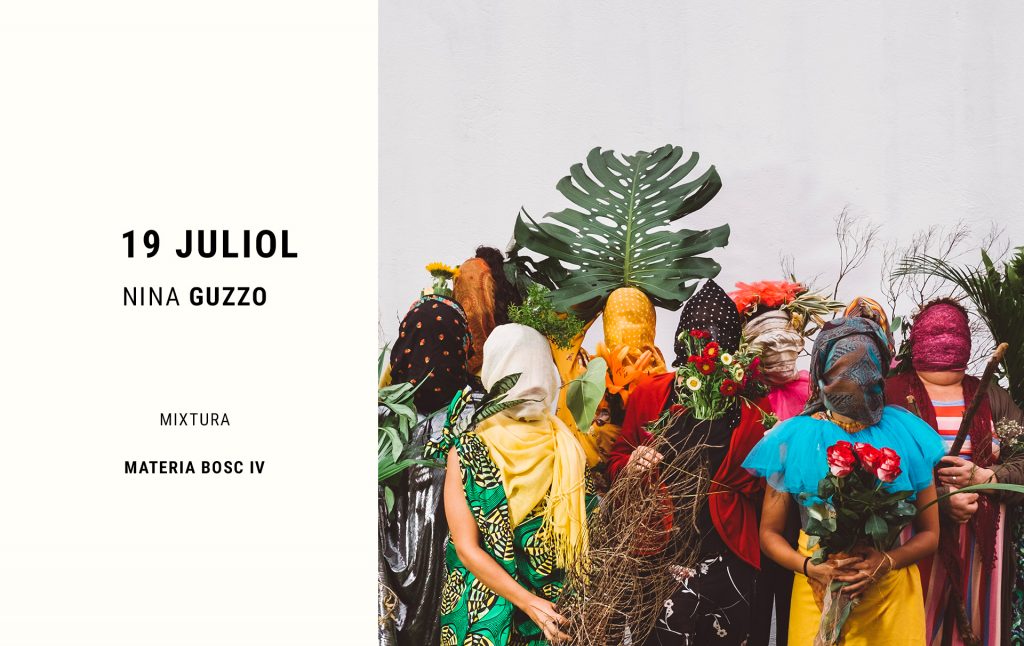
FOREST MATTER IV · Mixtura (2021) · Nina Guzzo, Brasil · 09:12 min
Mixtura is the result of the workshop “21 actions of women and plants” held with women living in Baixada Santista, São Paulo, Brazil. The workshop forged a ritual between women and plants, and thought of a choreographic mix, like a play on words by Italian philosopher Emanuele Coccia (2018) that suggests a metaphysics of the mix. A choreography of women interested in finding possible alliances between clothes, objects and plants. “Affective alliances,” as Ailton Krenak would say, are based on unlikely everyday life. Kinship and impossible neighbourhoods. Transforming to make other arrangements and imagine futures and rituals of counter-domestication.
Participating women: Armada Elisa Andrade Belizário, Brunna Talita Rodrigues, Fernanda Buongermino Vilela, Fernanda dos Santos Camara Melo, Joyce Nunes Souza, Júlia Rafaela Andrade Belizário, Karla Cristina Silva, Layla Alves Cardoso Vieira, Marília Guarit, Maria dos Rita de Càssia Utida, Silmara Franco Baron / Thayna, Cairu Teles Lira, Viviane de Macedo Pepice. Production: Marina Guzzo and Marília Guarita. Research platform // Lab Corpo i Art UNIFESP.
Proposal and research: Marina Guzzo. Photography and video: Gui Galembeck. Passants: Giulia Sales Nascimento da Silva / Alice Iassia. Marcela da Silva Lopes Internal Body Arts Project. Scientific Initiation: Flávia Pavani. Master’s student: Kidauane Regina. Graphic art: Julia Valiengo
Tuesday, 19 July 2022 · Documentary Premiere · Pati de l'Hospici · Olot · 19h
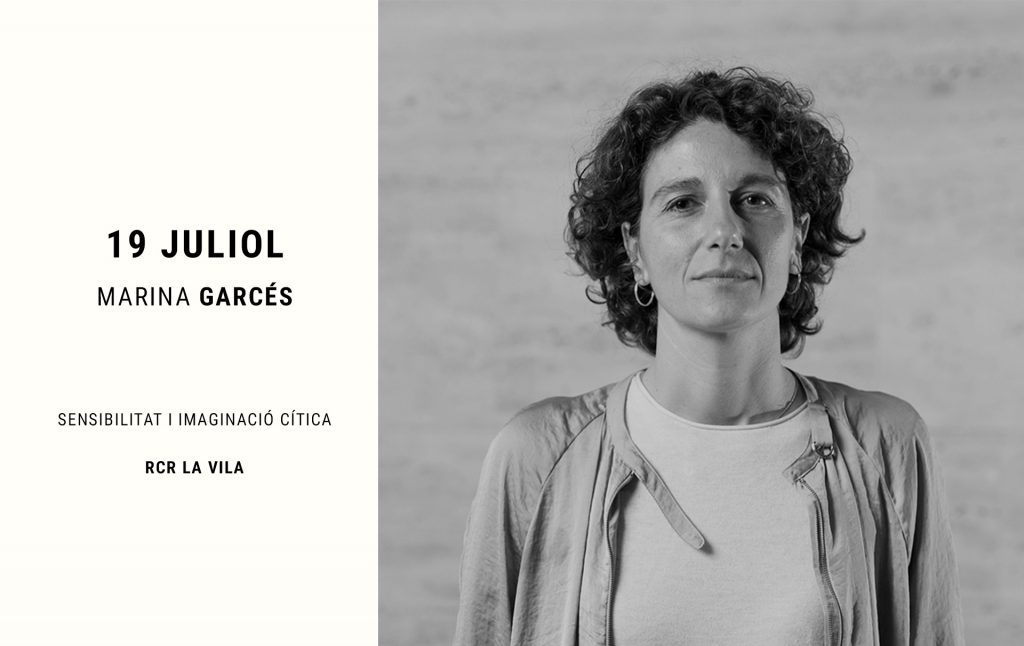
RCR LA VILA TUESDAYS · Sensitivity and Critical Imagination · Marina Garcés
Chamber Session · Farmhouse at RCR La Vila in la Vall de Bianya · Recorded May 5, 2022
Què i qui educa la sensibilitat avui ? La sensibilitat no és una disposició psicològica ni només una determinada forma del gust estètic. És la manera com percebem i ens afecta la nostra relació amb el món i amb els altres. Quan l’educació i la cultura no s’ocupen d’aquesta condició fonamental de la sensibilitat, ho fan altres realitats socials, com els mitjans, les xarxes o la indústria cultural. Com pensar, avui, una educació de la sensibilitat capaç de donar-nos la mesura del nostre món desmesurat? A partir d’aquí elaborarem la idea de l’educació de la sensibilitat com un “art dels límits”.
Marina Garcés Mascareñas (Barcelona, Spain, 1973) is a philosopher and university lecturer. After 15 years as a philosophy lecturer at the University of Zaragoza, she works at the Universitat Oberta de Catalunya. She directs the master’s degree in Philosophy for Contemporary Challenges and the Mussol research group. She is the author of several books, including Un mundo común (2012, A Common World), Filosofía inacabada (2015, Unfinished Philosophy), Nueva ilustración radical (City of Barcelona Prize 2018, New Radical Enlightenment) and Escuela de aprendices (2020, Apprentice School). In addition, she has promoted various collective projects in cultural institutions such as the CCCB and MACBA, among others, and is a regular contributor to multiple media. In education, she collaborates with the Xamfrà school and is the winner of the Marta Mata Prize for Education 2020. Internationally, her books have been translated into several languages, and she is a Fellow 2022 of The New Institute (Hamburg).
Wednesday, 20 July 2022 · Forest Matter · Pati de l'Hospici · Olot · 19h
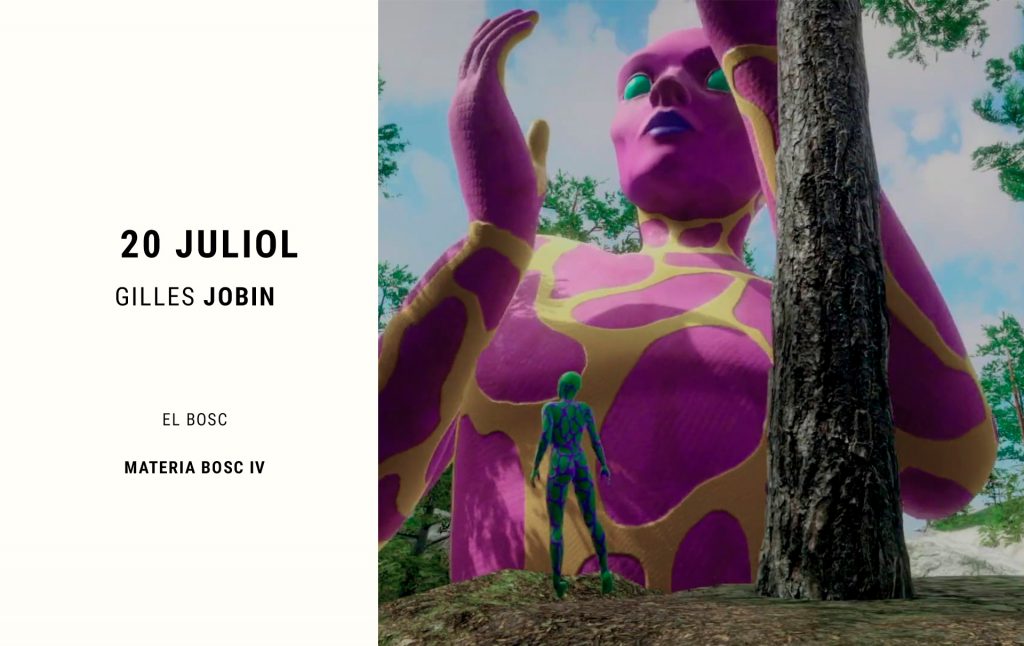
FOREST MATTER IV · The Forest (2022) · Gilles Jobin, Switzerland · 03:30 min
When the forest is gone, will we dance in a digital forest? Three dancers in Geneva, a dancer in Bangalore and a dancer in Melbourne, are recorded in real-time. Then, connected via the Internet, they dance together in a digital forest.
The Gilles Jobin Company began its digital experiments with immersive virtual reality in 2017, becoming a digital dance company during the pandemic when its director, Gilles Jobin, thought of capturing the movement of dancers and sending their avatars to perform in real-time for live audiences around the world.
Director: Gilles Jobin. Music: Hahn Rowe. Dancers in Geneva: Susana Panadés Diaz, Rudi van der Merwe, József Trefeli. Dancer in Melbourne: Victoria Chiu. Dancer in Bangalore: Diya Naidu. Leading 3D artist: Tristan Siodlak. Creative Director and Technologist: Camilo de Martino. Technical artist and network developer: Pierre-Igor Berthet. Real-time motion capture: Studios44 / MocapLab – Cie Gilles Jobin. Video editing: Gilles Jobin.
Wednesday, 20 July 2022 · Lecture · Pati de l'Hospici · Olot · 19h
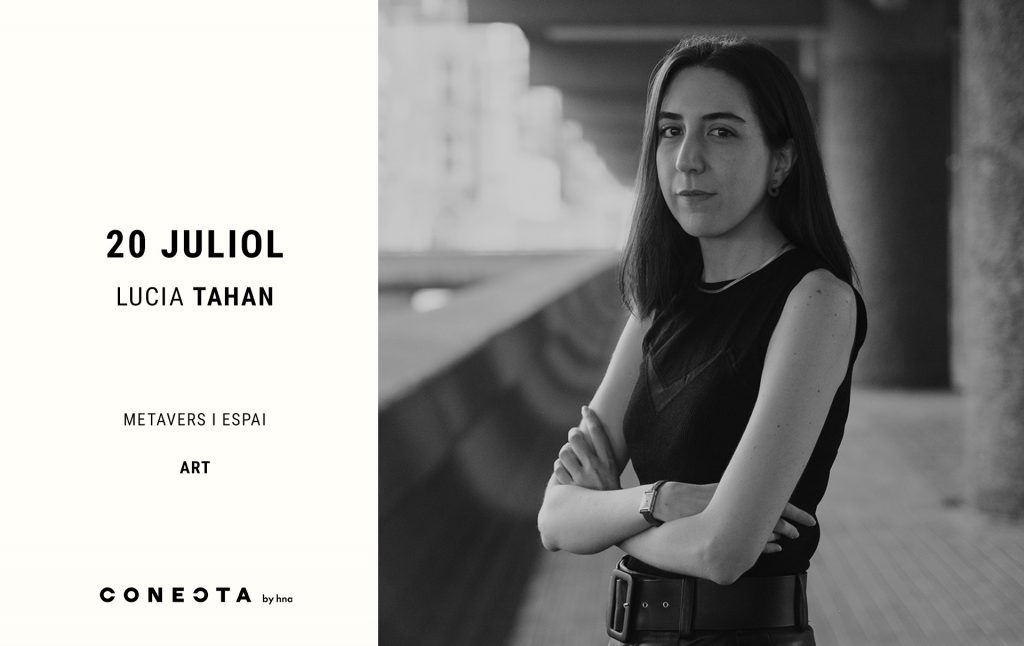
ART WEDNESDAYS · Metaverse and Space · Lucia Tahan
With the collaboration of CONECTA by hna
The Metaverse is postulated as the next technological frontier, but what does the Metaverse mean in spatial terms, and what aesthetic concepts dominate Augmented Reality? Lucia Tahan explains her recent work and discusses the critical role that architects can play in developing digital spatial environments.
Lucia Tahan is an architect and software designer specialising in Augmented Reality. Since 2018, her practice has been based in New York, Berlin, and London. Currently, she works as a spatial computation designer for Meta, leading design for its Augmented Reality creation software.
In 2018 she participated in the design of the Slovenian Pavilion at the Venice Architecture Biennale, where her work was also exhibited in the Spanish Pavilion. In 2019 she was awarded the Housing the Human fellowship for research on the future of housing. Previously, she co-founded a start-up incubated by the New Museum in New York. Her built work comprises two houses in Extremadura, Spain.
Her work has been featured in museums and institutions such as EPFL (2021), Bi-City Biennale of Architecture/Urbanism Shenzhen (2020), Copenhagen Architecture Festival (2019), HKW Berlin (2018), Istanbul Design Biennial (2018), MAXXI in Rome (2017), Lisbon Architecture Triennale (2017) or Seoul Architecture Biennale (2017). In addition, it has been published by media such as El Pais and e-flux and academic publications such as Lobby (Bartlett School of Architecture).
Trained at the Madrid School of Architecture (ETSAM-UPM), she has also studied at the Bezalel Academy of Arts and Design in Jerusalem and the Technische Universität Berlin. In addition, she has taught at the University of Illinois at Chicago, Bauhaus Dessau, ETSAM and Universidad Camilo José Cela.
